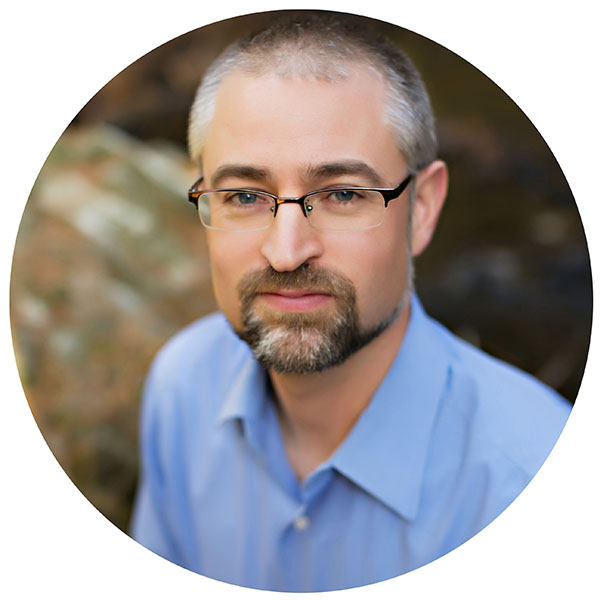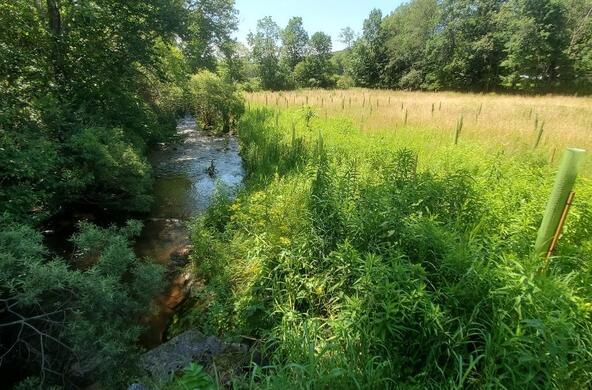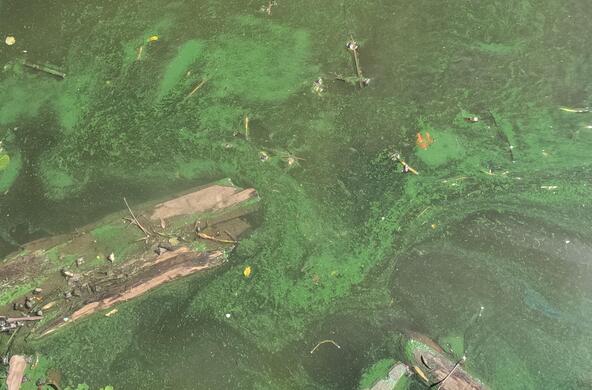The Op-Ed was published in the Times Union 10/03/2025
In September, an unprecedented harmful algal bloom struck the Hudson River. Dense colonies of bright green Microcystis — a cyanobacteria that can produce toxins dangerous to humans, pets and wildlife — have clouded the river from Beacon north to Hudson. Up and down the river, drinking water plants, rowing clubs, community swim events and scientific and advocacy organizations are scrambling to understand the bloom and deal with its consequences.
One message is clear: We must take action now to reduce the likelihood of future blooms and increase our ability to respond appropriately when they do occur.
Cyanobacteria are a natural part of the river ecosystem, but under the right conditions they can cause harmful blooms. The current bloom is far bigger than anything Cary Institute researchers have seen in nearly 40 years of monitoring the Hudson. Water analyses by Riverkeeper and others confirm that the bloom is producing harmful toxins. While treated drinking water from the river remains safe, contact with untreated river water in areas where the bloom is dense is potentially dangerous to people and their pets while the bloom persists.
This is the first time such a large harmful algal bloom has been documented in the Hudson River, but it will not be the last. Such blooms are increasing in frequency and severity throughout New York and across the country, and the Hudson is not immune from the pressures driving these trends.
What can be done to reduce the threat that harmful algal blooms pose to our aquatic ecosystems and to our use and enjoyment of them?
First, we should work to prevent blooms by addressing their causes. Actions to limit climate change are crucial, given the role of long-term warming and short-term droughts in favoring cyanobacterial blooms. We must also take immediate action to reduce the nutrient pollution that fuels these blooms.
This pollution comes mainly from sewage, fertilizer and manure runoff, and from atmospheric deposits of compounds produced by fossil fuel combustion and agriculture. The Hudson needs a “pollution diet” to reduce its nutrient overload through upgrades to wastewater treatment and improvements in watershed management.
State action to reduce nutrient pollution — such as regulating phosphorus and supporting the Clean Water Infrastructure Act and the Environmental Protection Fund — would improve water quality and reduce the likelihood of harmful blooms.
Second, we need to prepare for the likelihood that harmful algal blooms will become more common on the Hudson. We must increase monitoring and research on the river to detect blooms when they occur, build early warning systems for river communities, and test understanding of the causes and controls of blooms. The funding needed to support such efforts is currently limited and tenuous. The state should identify long-term funding for the Hudson River Ecosystem Monitoring Program and other research and monitoring efforts.
Preparing for blooms also means developing a clear emergency response plan that can be put into motion when a harmful bloom is detected. Such a plan should define responsibilities for rapidly gauging the extent and toxicity of a bloom and for effectively communicating risks and recommended actions to drinking water treatment plants, river users and the general public. Increasing testing capacity for cyanotoxins at state labs, establishing enforceable drinking water maximum contaminant levels for cyanotoxins, and updating protocols at drinking water treatment plants that draw from the river are among the priority actions here.
As the current harmful algal bloom on the Hudson River has unfolded, we have been struck again and again by the outpouring of concern from all of those who use, depend on or care about this iconic ecosystem. With this bloom, the river is telling us something. We should listen.
Chris Solomon is a senior scientist at the Cary Institute of Ecosystem Studies. Dan Shapley is the senior director for advocacy, policy and planning at Riverkeeper.







